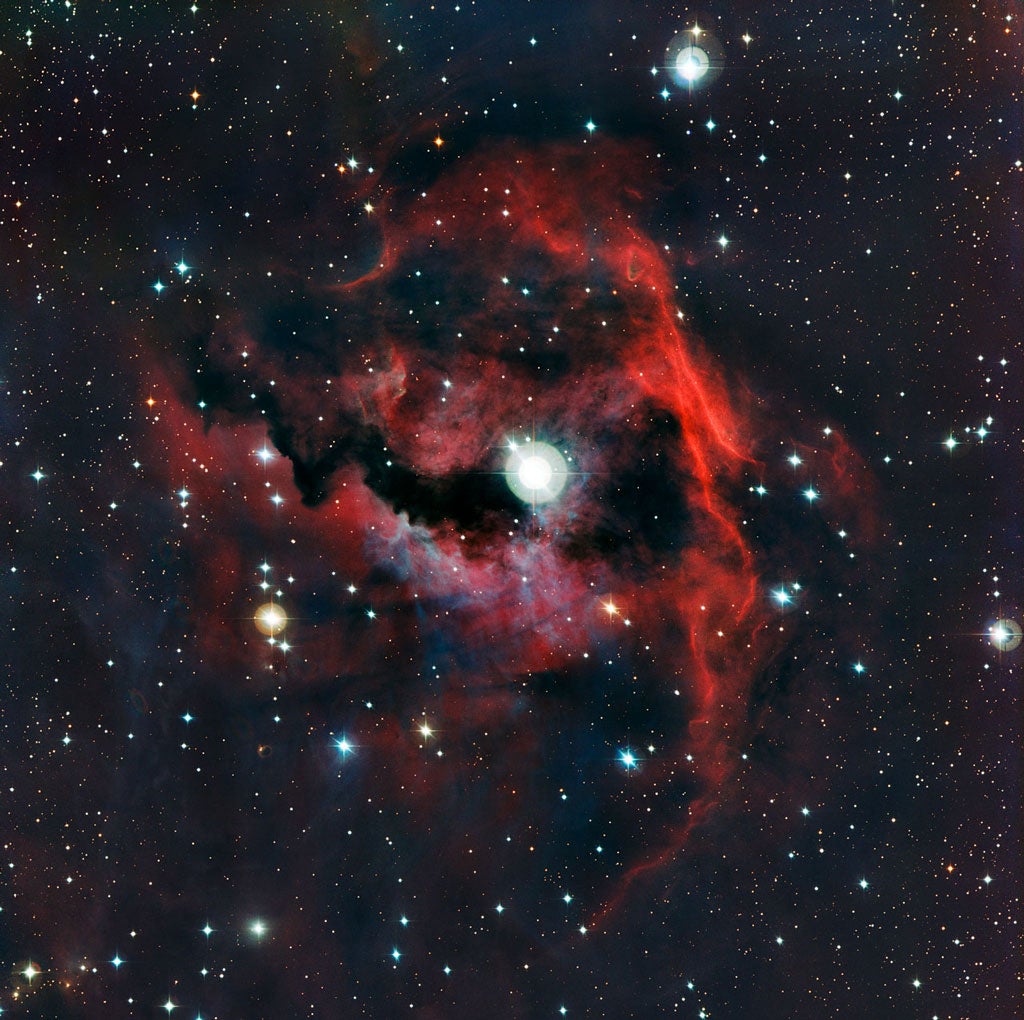Nebulae are among the most visually impressive objects in the night sky. They are interstellar clouds of dust, molecules, hydrogen, helium, and other ionized gases where new stars are being born. Although they come in different shapes and colors, many share a common characteristic: When observed for the first time, their odd and evocative shapes trigger astronomers’ imaginations and lead to curious names. This dramatic region of star formation, which has acquired the nickname Seagull Nebula, is no exception.
This new image shows the head part of the Seagull Nebula. It is just one part of the larger nebula known more formally as IC 2177, which spreads its wings with a span of more than 100 light-years and resembles a seagull in flight. This cloud of gas and dust is located about 3,700 light-years from Earth.
The Seagull Nebula lies just on the border between the constellations Monoceros the Unicorn and Canis Major the Great Dog and is close to Sirius, the brightest star in the night sky. The nebula lies more than 400 times further away than the famous star.
The complex of gas and dust that forms the head of the seagull glows brightly in the sky due to the strong ultraviolet radiation coming mostly from one brilliant young star — HD 53367 — that can be spotted in the center of the image and could be taken to be the seagull’s eye.
The radiation from the young stars causes the surrounding hydrogen gas to glow with a rich red color and become an HII region. Light from the hot blue-white stars is also scattered off the tiny dust particles in the nebula to create a contrasting blue haze in some parts of the picture.
Although a small bright clump in the Seagull Nebula complex was observed for the first time by the German-British astronomer Sir William Herschel back in 1785, the part shown here had to await photographic discovery about a century later.
By chance, this nebula lies close in the sky to the Thor’s Helmet Nebula (NGC 2359). This nebula, with its distinctive shape and unusual name, was picked as the first-ever object selected by members of the public to be observed by ESO’s Very Large Telescope (VLT). These observations are going to be part of the celebrations on the day of ESO’s 50th anniversary, October 5, 2012. The observations will be streamed live from the VLT on Paranal.










